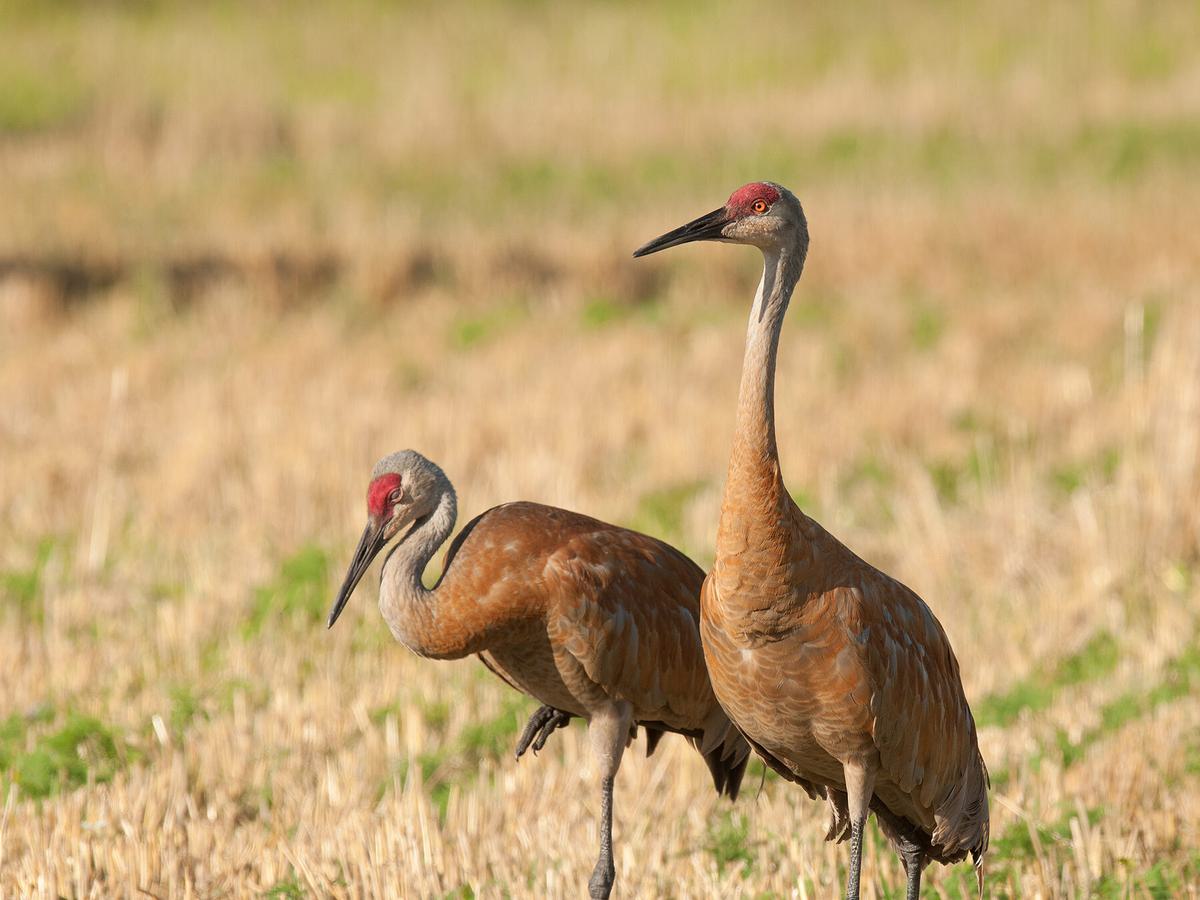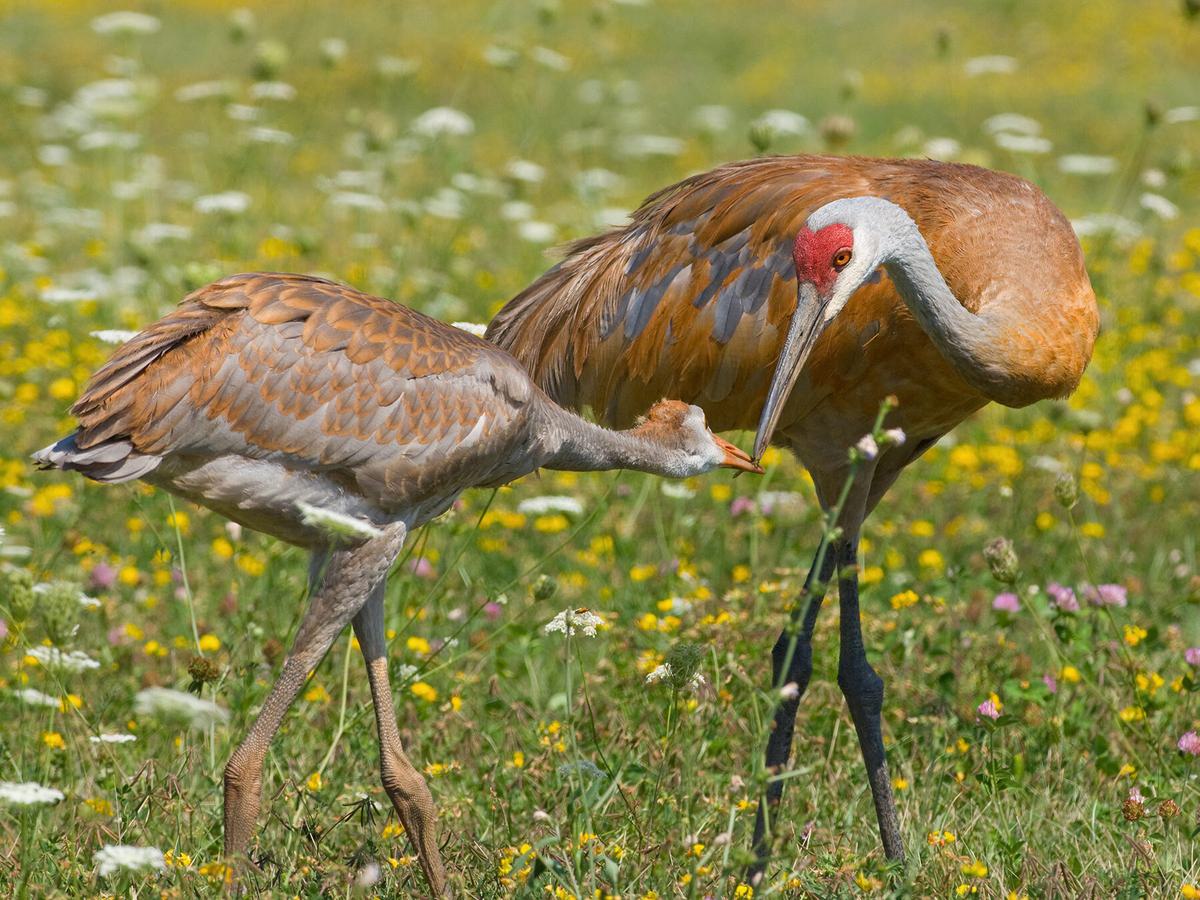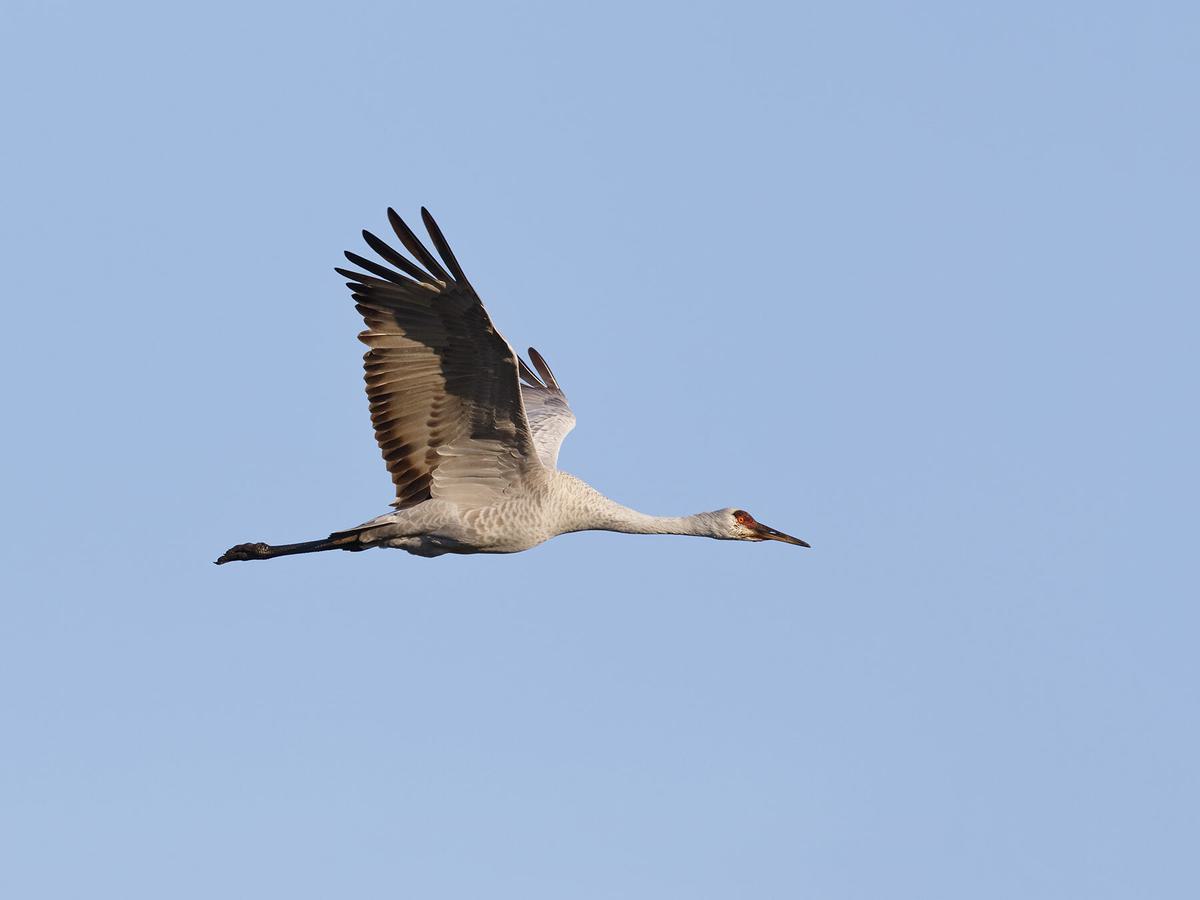Sandhill cranes are one of the oldest living bird species in the world. They also have considerably long lifespans. Of course, whether the cranes are wild or living in captivity can have a significant impact on how many years they live. What environmental and human impacts they face will make a difference as well. So let's get into it, how long do sandhill cranes live?
A healthy, mature sandhill crane has the potential to live 20-40 years, even in the wild. Young sandhills are at greater risk due to their vulnerability, but if they make it to maturity they are less susceptible to predation by mammals and other birds.
In this article, we will discuss the lifespan and life cycle of the sandhill crane in more detail. We will also dive into the factors that can shorten their longevity. Read on to discover more!

On average, sandhill cranes live anywhere from 20 to 40 years old
How long do sandhill cranes live in the wild?
In the wild, many sandhill cranes die young due to predation. However, if they can make it through their first two years, they are likely to reach 15 or 20 years old.
How long do sandhill cranes live in captivity?
Sandhill cranes in captivity can live 30 or more years. These birds are less vulnerable to predation and human impact, such as degradation of habitat.

A pair of sandhill cranes in a harvested grain field
How do most sandhill cranes die?
Many young sandhill cranes die naturally from predation by mammals and other birds. However, habitat loss and overhunting are the biggest threats to the sandhill. Their wetland habitats are drained and prairies are excavated for housing developments and agricultural use.
Populations of breeding sandhill cranes in the southeastern United States are declining due to these factors. Overall, the species as a whole is still listed as of least concern, but small subpopulations, such as the A. c. pulla in Mississippi or the A. c. nesiotes in Cuba are listed as Endangered.
What is the life cycle of a sandhill crane?
Sandhill crane young leave the nest typically within a day after hatching. They begin following their parents through the marshes where the adults forage for themselves and their chicks. Gradually, the young cranes learn to feed on their own, until they are no longer reliant on food provided by their parents.
After 65 to 75 days, the sandhill crane colts begin taking their first flights. They are nowhere near ready to leave their family yet, though. Young remain with their parents for nine to ten months after hatching, flying with them during migration.
Sandhill cranes reach sexual maturity by two years of age. At this time, the birds choose mates and begin breeding. A mature crane is likely to live nearly 20 years in the wild, during which time they continue to migrate to and from their northern breeding grounds and southern wintering habitat.

A sandhill crane feeding one of its young a grasshopper
What are the predators of sandhill cranes?
Sandhill cranes are not at the bottom of the food chain as far as birds go, but they do have a few predators. Bobcats and coyotes will generally prey on young or sickly adults, while raccoons and common ravens eat crane eggs.
How old is the oldest sandhill crane?
The oldest known sandhill crane was at least 36 years old. It was banded in 1973 in Wyoming and found in New Mexico in 2010.

Sandhill Crane spreading its wings
How long can sandhill cranes live without food?
Sandhill cranes are diurnal, meaning they are active during the day. Many of their daylight hours are spent foraging and eating. Juveniles spend considerably longer amounts of time foraging than adults, perhaps due to higher metabolisms. Adult cranes typically consume at least one pound of food per day but can eat up to three pounds. These birds would likely not survive without food for longer than a week.
Do sandhill cranes survive winter?
Migratory populations of sandhill cranes survive winters by migrating south from their northern breeding grounds. On the other hand, non-migratory populations living and breeding in the southeast United States and Cuba do not have to worry about winter, Climates are mild enough year-round for the birds to remain in one place.
The lesser, greater, and Canadian subpopulations of sandhills migrate due to their far northern breeding ranges. These birds would not survive if they were to overwinter in Siberia, Alaska, or Canada. Instead, they fly south to Texas, Florida, southern California, and northern Mexico.

Sandhill Crane in flight, Gainesville, Florida
Are sandhill cranes protected?
Sandhill cranes are protected under the Migratory Bird Treaty Act (MBTA) of 1918 - which prohibits anyone from taking (capturing, killing, trading, selling, or transporting) a protected bird without prior authorization. At one time, all populations of sandhill cranes were also protected from hunting due to severe population decline.
During the first half of the twentieth century, the crane suffered greatly from habitat loss and human activity in its existing habitat, including hunting.
In the late 1950s, once sandhill cranes had recovered, hunting was reinstated. Today, 14 U.S. States, two Canadian provinces, and Mexico allow crane hunts, reasoning that it helps reduce crop damage and manage populations.
Florida sandhills are the only population currently listed as Endangered. However, there is a concern for the future of this bird. Habitat degradation and disturbance from human activity continue.

